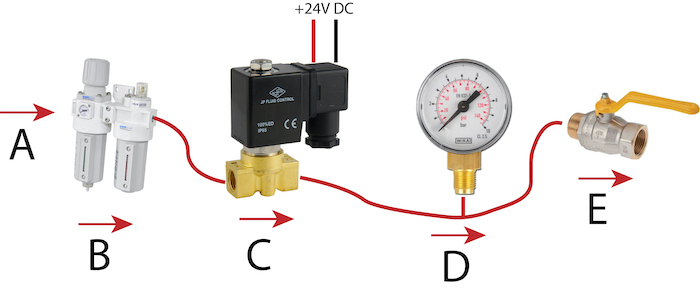Nov 18, 2025
Electromagnetic valves are used to control fluid flow in industrial and automation systems. The reliability and performance of these valves are essential to ensuring the safety, efficiency, and quality of such systems.
Therefore, it is crucial to conduct comprehensive testing before installing or using an electromagnetic valve. Electromagnetic valve testing includes inspecting both its electrical and mechanical components, such as the solenoid coil and the valve body itself. This article will discuss the functional testing of electromagnetic valves and their related components.
Testing an electromagnetic valve is essential to ensure proper operation and to prevent potential issues that could lead to system failures or safety hazards. You should test the electromagnetic valve in the following situations:
During installation
After maintenance
Before commissioning
When a system issue is suspected, such as leakage or malfunction
The tests performed on an electromagnetic valve typically include: measuring the resistance and voltage of the solenoid coil, performing functionality tests, and conducting air-tightness testing on the valve block.
Functional Testing Steps for the Solenoid Valve
Verifying Whether the Valve Operates Properly in Its Intended Application.Air enters the system step by step in the direction of A → E, thereby verifying whether the solenoid valve can operate normally and maintain pressure.

Please consult the manufacturer's datasheet or instrument nameplate to confirm the voltage and current ratings of the solenoid valve.
Check the port configuration of the solenoid valve; it can be normally closed (NC) or normally open (NO).
Connect the instrument according to the typical test setup shown in Figure 3.
Connect compressed air to end A and ensure a stable supply pressure.
Install the air treatment unit B before the solenoid valve to filter out impurities, moisture, and oil.
Connect the power to the valve terminals and apply the rated voltage to the coil, listening for the “click” sound that indicates the solenoid is actuating.
Check whether air flows smoothly from end C to the pressure gauge at end D.
Resistance Test
Voltage Test
Air tightness test of manifold block
The solenoid valve manifold block is responsible for distributing air or hydraulic media to multiple solenoid valves. To ensure that its internal channels, connection ports, and sealing surfaces do not leak during operation, an air tightness test is essential.
The testing method typically involves applying a specified pressure of compressed air (or nitrogen), closing all outlet ports, and monitoring pressure changes using a pressure gauge or leak detection device. If the pressure remains stable within the required time, the manifold block is considered properly sealed. If the pressure drops, it indicates a leak that requires further inspection.
You May Interest In

Apr 17, 2018 Blog
Attention to the installation of solenoid valveFOKCA ©1998-2025 Fescolo Pneumatic All Rights Reserved Sitemap